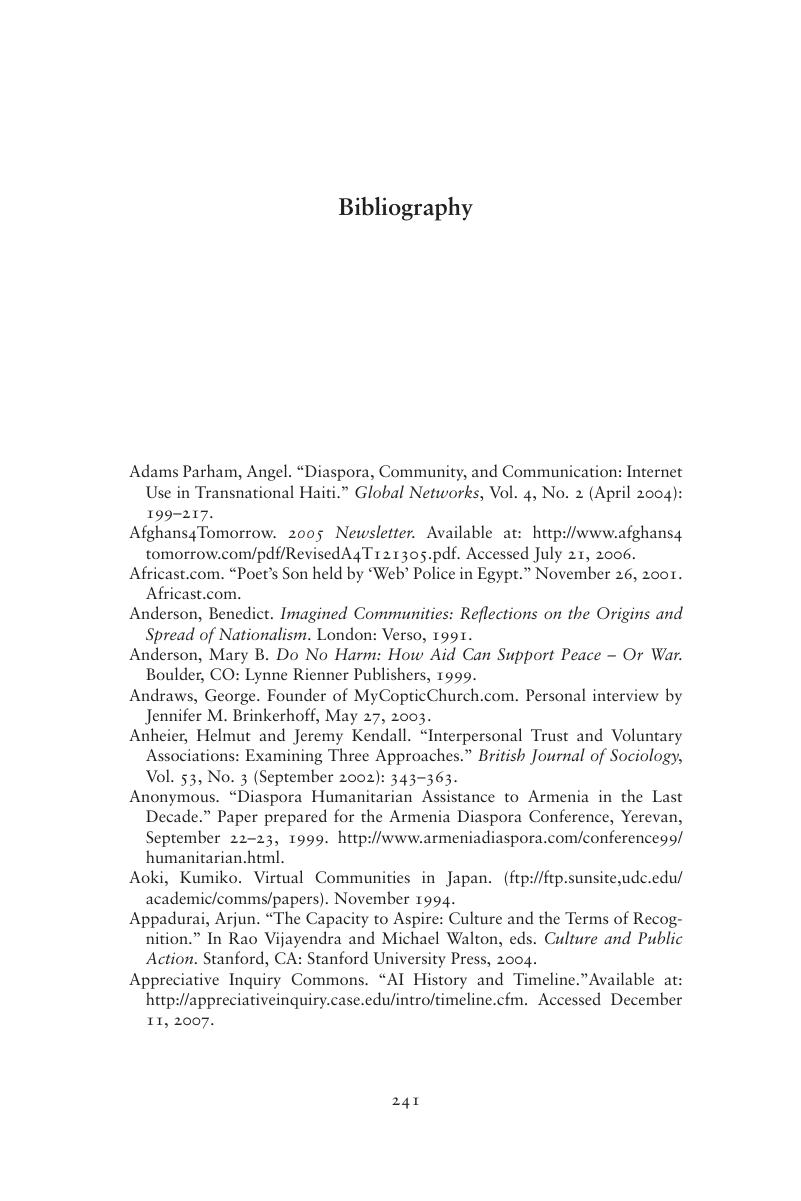Book contents
- Frontmatter
- Contents
- Tables and Figure
- Acknowledgments
- Digital Diasporas
- 1 Introduction
- 2 Diasporas, Identity, and Information Technology
- 3 Keeping the Dream Alive
- 4 Digital Diasporas as Cybercommunities
- 5 Digital Diasporas and Conflict Prevention
- 6 Policy Agendas, Human Rights, and National Sovereignty
- 7 Helping the Homeland
- 8 Digital Diasporas: A New Avenue for Peace and Prosperity?
- Appendix
- Acronyms
- Bibliography
- Index
- References
Bibliography
Published online by Cambridge University Press: 05 June 2012
- Frontmatter
- Contents
- Tables and Figure
- Acknowledgments
- Digital Diasporas
- 1 Introduction
- 2 Diasporas, Identity, and Information Technology
- 3 Keeping the Dream Alive
- 4 Digital Diasporas as Cybercommunities
- 5 Digital Diasporas and Conflict Prevention
- 6 Policy Agendas, Human Rights, and National Sovereignty
- 7 Helping the Homeland
- 8 Digital Diasporas: A New Avenue for Peace and Prosperity?
- Appendix
- Acronyms
- Bibliography
- Index
- References
Summary

- Type
- Chapter
- Information
- Digital DiasporasIdentity and Transnational Engagement, pp. 241 - 266Publisher: Cambridge University PressPrint publication year: 2009



